|
STEALTH SHIPS
SEE OUR WWIII SURVIVAL GUIDE OR RETURN TO BASE
|
|||
|
|
|||
|
Juliet Marine System - Ghost boat
Submarines are true stealth warships. But even then can be detected by their underwater sound and pressure wave signatures. When submerged they are most efficient running. And they have to keep moving to maintain depth, except when resting on the ocean bed, or surfaced.
That is the problem with many stealth designs, they are high drag hulls, are quite expensive to build, or have complications. And, you are wasting your time filing patents or speaking with most navies, UK Royal Navy and US NAVY. They will steal your idea and blacken your character, drain your brain like a prune and spit out the pip. They'd rather retire you than change what they do. Don't rock the boat. Defence contracts are only for those in the fold. They loathe innovation like the plague. And detest entrepreneurs with new ideas. What they do adore is procurement fraud.
The 'Elizabeth Swann' cruising up the Amazon, seen here in normal low-drag hull mode, with solar wings tilted down on both sides, about 30 degrees from horizontal.
The Elizabeth Swann is a virtual 'stealth' ship due to the angles of the hull design, and the ability of the vessel to change the angle of her solar wings relative to the horizon. In addition, the electric waterjet drives reduce the sonar signature, making them linearly directional, as opposed to an unguarded general sound broadcast, as in a traditional ship, open revolving propeller design.
These features, allied to the ability to flood tanks (compartments in the trimaran hulls) to lower the boat into the water, to reduce surface area to the wind, actually for use as a sea-anchor in storm conditions, can make the ship virtually undetectable to radar and sonar.
For most of the time, the ship is well above the water, using wave piercing hulls. Thus runs efficiently, until dangers present.
This is more of an advantage than a ship that cannot alter its form, by virtue of fixed hull and superstructure panels, and fixed displacement. For example, the Elizabeth Swann can change the angle of large wing-panels at will, to be visible to radar at one moment, then invisible a few minutes later. That is much more confusing to an enemy, than a ship that has reduced visibility all of the time. Because, if a ship is visible to radar, the enemy will think they can track it and feel safe that they know where it is. Then if it suddenly disappears, confusion sets in. Because the ship could have sunk or changed course, when in reality its radar footprint has changed. The Elizabeth Swann is the first (and we think only) ship in the world to have these features. She has what the designer calls an "active" hull.
THE NATURAL WORLD
Many insects have evolved to use body parts as camouflage. Their exoskeleton design is almost perfectly suited to such purposes. Where the body is hard keratin on the outside, as opposed to a soft skin on the outside and a hard bone skeleton on the inside. Keratin can be formed into horns or wing cases (in beetles) or make an insect look like a leaf (praying mantis) or stick.
Plumage, fur and feathers give mammals and birds the ability to disguise themselves, to blend into their surroundings. Peacock tail feathers give us an example of a massive colour display used to frighten enemies and as a courtship display. Zebra have white and black lines in their body hair, as camouflage to fool big cat predators during a chase. Humpback whales have large white and grey patterns on their enormous fins to trick sharks and killer whales trying to bite them, as to what to aim at. While from above, they present as dark-grey or blue-black, to blend into the seascape. In WWII, aircraft adopted such a two-tone scheme, painted light blue underneath and field green on top of their wings and fuselage.
All of this is survival strategy. Whereas, Leopards and Cheetahs have spots to disguise them when resting in trees and stalking prey. Tigers have stripes for hunting in the jungle, while Lions are plain sandy-brown, to blend into the African savannah. Yet these large predators from different continents are so biologically similar, that they can reproduce, to give Tions or Ligers.
Humans can alter their appearance in seconds, just by changing clothes. Humans can also dye the colour of their hair and wear hats. By changing from jeans and a 'T' shirt, into a suit, a student can blend in at high level social functions and fool their peers. An operative who would normally wear a shirt and tie to work, can put on an overall to mix with workers.
The ultimate camouflage for a human is a combat uniform. These come in many printed colours and designs, depending on the geographical location of operations. Some are black (night operations), some white (snow), and some sandy colored with green leaves. In the field of human conflict, if a spy is caught wearing the uniform of their enemy, they can sometimes be shot (despite the Geneva Convention), after a lawful trial and conviction.
SPIES & SPYING
- Combatants who are captured without the minimum requirements for distinguishing themselves from the civilian population, i.e. carrying arms openly during military engagements and the deployment immediately preceding it, lose their right to prisoner of war status without trial under Article 44 (3) of Additional Protocol I.
-
Spies, i.e. persons who collect information clandestinely in the
territory of the opposing belligerent. Members of the armed forces
conducting reconnaissance or special operations behind enemy lines are
not considered spies as long as they wear their uniform.
SIGNATURE REDUCTION
STEALTH AIRCRAFT
Since radar-directed defenses began taking a toll of bomber formations in
World War
II, aircraft designers and military aviators
have sought ways to avoid radar detection. Many materials of the early
jet age were known to absorb radar energy rather than reflect it, but
they were heavy and not strong enough for structural
applications. It was not until after the 1960s and
’70s, with the development of such materials as
carbon-fibre
composites and high-strength plastics (which possessed structural
strength as well as being transparent or translucent to radar), that
radar signature reduction for piloted combat aircraft became possible.
The
existence of a Stealth program, designed to produce aircraft that were
effectively immune to radar detection at normal combat ranges, was
announced by the U.S. government in 1980. The first aircraft employing
this technology, the single-seat Lockheed F-117A Nighthawk ground-attack
fighter, became operational in 1983. The second was the Northrop B-2
Spirit strategic bomber, which first flew in 1989. Both aircraft had
unconventional shapes that were designed primarily to reduce radar
reflection. The B-2 was of a flying-wing design that made it only
slightly longer than a fighter yet gave it a wingspan approaching that
of the B-52, while the F-117A had a short pyramid-shaped fuselage and
sharply swept wings.
OPERATIONAL STEALTH AIRCRAFT
Lockheed MartinF-22A Raptor
CHRISTENING
CEREMONY - 12 APRIL 2014
DESCRIPTION
The
Zumwalt-class destroyers are a class of United States Navy destroyers
designed as multi-mission stealth ships with a focus on land attack. The
class is a scaled-back project that emerged after funding cuts to the
larger DD-21 vessel program. The program was previously known as the
"DD(X)". The class is multi-role and designed for surface warfare,
anti-aircraft,
and naval fire support. They take the place of battleships in filling
the former congressional mandate for naval fire support, though the
requirement was reduced to allow them to fill this role. The vessels'
appearance has been compared to that of the historic ironclad warship.
Bayview, Idaho (Aug. 23, 2005) - The Advanced Electric Ship Demonstrator (AESD), Sea Jet, funded by the Office of Naval Research (ONR), is a 133-foot vessel located at the Naval Surface Warfare Center Carderock Division, Acoustic Research Detachment in Bayview, Idaho. Sea Jet will operate on Lake Pend Oreille, where it will be used for test and demonstration of various technologies. Among the first technologies tested will be an underwater discharge water jet from Rolls-Royce Naval Marine, Inc., called AWJ-21, a propulsion concept with the goals of providing increased propulsive efficiency, reduced acoustic signature, and improved maneuverability over previous Destroyer Class combatants.
HULL DESIGN - TUMBLEHOME
A return to a hull form not seen since the Russo-Japanese War in 1905, the Zumwalt-class destroyer reintroduces the tumblehome hull form. Originally put forth in modern steel battleship designs by the French shipyard Forges et Chantiers de la Méditerranée in La Seyne in Toulon, French naval architects believed that tumblehome, in which the beam of the vessel narrowed from the water-line to the upper deck, would create better freeboard, greater seaworthiness, and, as Russian battleships were to find, would be ideal for navigating through narrow constraints (canals). On the down side, the tumblehome battleships experienced losses in watertight integrity and/or stability problems (especially in high speed turns). 21st century tumblehome is being reintroduced to reduce the radar return of the hull. The inverted bow is designed to cut through waves rather than ride over them. As mentioned above, the stability of this hull form in high sea states has caused debate among naval architects. The tumblehome has not been featured in USN concept designs since the Zumwalt class.
The
stability of the DDG-1000 hull design in heavy seas has been a matter
of controversy. In April 2007, naval architect Ken Brower said, "As a
ship pitches and heaves at sea, if you have tumblehome instead of flare,
you have no righting energy to make the ship come back up. On the DDG
1000, with the waves coming at you from behind, when a ship pitches
down, it can lose transverse stability as the stern comes out of the
water – and basically roll over." The decision to not use a tumblehome
hull in the CG(X) cruiser, before the program was canceled, may suggest
that there were concerns regarding Zumwalt's seakeeping. However, in a
1/4 scale test of the hull design, named Sea Jet, the tumblehome hull
proved seaworthy.
STEALTH
Despite
being 40% larger than an Arleigh Burke-class destroyer the radar
signature is more akin to a fishing boat, according to a spokesman for
Naval Sea Systems Command; sound levels are compared to the Los
Angeles-class submarines. The tumblehome hull reduces radar return and
the composite material deckhouse also has a low radar return. Water
sleeting along the sides, along with passive cool air induction in the
mack reduces thermal emissions. Overall, the destroyer's angular build
makes it "50 times harder to spot on radar than an ordinary destroyer.
Naval warfare
CONSTRUCTION
PROPULSION
DINOSAUR TAX DOLLAR DINE OUT
Traditional manned warships are outdated combat weapons that superpowers like to parade about the ocean to demonstrate affluence, in the process polluting the planet massively. The Zumwalt destroyer is a step in the right direction in terms of automation - but still with 100 human lives will be lost in an engagement as a $3.6billion dollar liability. This class of warship has its uses but compared with robot battleships, its size and cost renders it an asset whose loss will hit the US hard, when confronted by ocean going drones such as the Scorpion HK. It only takes one well aimed torpedo, or one cruise missile to sink a large warship. The larger the conventional warship the more staggering the loss of life - and the blow to the nation concerned. It's a high price to pay for a bit of ocean swagger, however spectacular they look on open days. Stealth is an outdated concept with SeaWolf tactics where a network of drones will soon close on a ship, once it has fired, or otherwise strayed into a patrolled patch of ocean.
Lawmakers and others have
questioned
whether the Zumwalt-class costs too much and whether it provides the
capabilities the U.S. military needs. In 2005 the Congressional Budget
Office estimated the acquisition cost of a DD(X) at
$3.8–4.0bn in 2007 dollars, $1.1bn more than the navy's estimate.
The Advanced Electric Ship Demonstrator (AESD) in icy waters. Sea Jet was funded by the Office of Naval Research. Without funding from navies, many innovations would never be tried or tested.
SPECIFICATIONS
AIRCRAFT CARRIER INDEX
Cavour - Italy Chakri Naruebet - Thailand Clemenceau - France Dokdo - Republic Korea Gerald Ford Class - USA Hyuga - Japan Invincible - UK Kuznetsov - Russia Liaoning - China Nimitz - USA Principe de Asturias - Spain Queen Elizabeth - UK Vikrant Class - India
WARSHIPS
Bismarck - Battleship - Germany HMS Neptune - Leander class cruiser 1941 WWII Type 23 - Duke class frigate - UK Type 26 - Global combat ship - UK Type 45 - Daring class destroyer - UK Electric prototype - USA
SUBMARINE INDEX
Alvin DSV - Woods Hole Oceanographic Institution Deepsea Challenger - Mariana Trench, James Cameron 2012 HMS Astute 1st of Class HMS Vanguard- Trident INS Sindhurakshak - explosion & sinking Littoral combat vessels Lusitania - Torpedo attack Nuclear submarines lost at sea Predator - Covert submarine hunter/killer Seawolf - Autonomous wolf pack deployment of Predator mini-subs Torpedoes - UUV anti submarine weapons Trieste - World record depth - Mariana Trench 1960 U20 - Kapitan Leutnant Walther Schwieger USS Bluefish WWI submarine USS Bluefish - Nuclear submarine USS Jimmy Carter - Seawolf class fast attack nuclear submarine USS Nautilus - 1st nuclear submarine & subsea north pole passage USS North Dakota - 11th Virginia class submarine USS Scorpion - Lost at sea with all hands
Pyramidal Egyptian
Sleek
30 April 2012 - DARPA - SEA SHADOW AUCTION
The Sea Shadow, a high-tech military sea vessel which cost more than $195 million to develop, only received an opening bid for the relatively tiny sum of $50,000, with only a $10,000 deposit required.
The ex-Sea Shadow is now to be disposed of by dismantling and scrapping the vessel within the USA, according to the description on the GSA website. “Dismantling is defined as reducing the property such as it has no value except for its basic material content.” The 164-foot experimental craft was first constructed in 1983 by Lockheed for the U.S. Navy and contains the same stealth technology used by its more famous aerial counterparts. Although it appears almost flimsy on the surface, it actually contains two submerged twin hulls and is specifically designed to withstand very rough ocean waves of up to 18 feet.
The vessel, which is able to evade radar detection due to its angular shape, cost just short of 157 Million dollars to develop. But it is now destined for the scrap heap unless someone takes it off the Navy.
|
|
|
Ultimate Weapons - Stealth ship
While a crew of three runs the Stiletto, a dozen SEALs can slip off the back of the ship, in an 11-meter rigid inflatable boat -- or they can send a set of flying drones out on spy missions from the upper deck. The ship can stay on station for eight hours while the robots or the special forces are out on their operations. And the Stiletto can keep an even keel while it waits; it's cleared to operate in Sea State 5 -- waves twelve feet high and 157 feet long.
If the Stiletto works out as planned, it'll be good news for special forces. Because while every ship-maker says they've come up with the ideal commando-delivery system, several of the options haven't worked out as planned.
Take the Advanced SEAL Delivery System. "The subs were originally expected to cost $80 million each; the first one alone has cost $446 million," notes the Times-Dispatch. "The vessel was noisier than planned -- bad news for a submarine. Designs were changed to muffle the sound, and now the mini-sub vibrates too much." Which is defnitely not how commandos like to travel.
UPDATE 1:28 PM: Of course, Inside Defense had details on the ship months ago. A few:
* One reason for the unique shape is the ship was designed like an aircraft... OFT’s first director, Arthur Cebrowski, who died last month, was “very firm that we’re going to build an aircraft on the sea"... The hull has four distinct arches, which look like wings, that utilize air pressure to funnel water and glide along the surface.
* Through its “maritime data bus,” or on-board computer, the vessel will have the ability to “plug and play” with different sensors, linking with unmanned vehicles and other crafts of varying sizes, he said. With only one panel of windows for looking ahead, Stiletto will use deck cameras to give the crew a sense of what is happening around the ship.
* Production of the Stiletto prototype began in October 2004, costing $6 million in funds from OFT. Nearly the same amount has been earmarked by OFT and SOCOM combined for experimentation and testing.
UPDATE 2:37 pm: As C-Low notes in the comments, the latest issue of Defense Technology International has the Stiletto on the cover.
Latest Comments
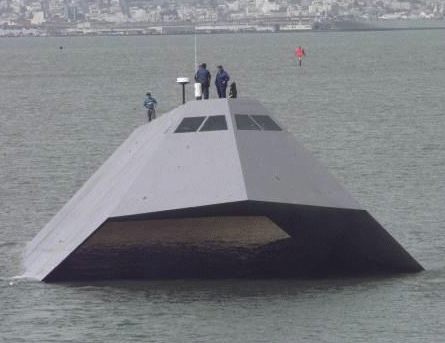



Sea Shadow: Stealth Ships
Built by Lockheed in total secrecy inside the famous Hughes Mining Barge, the Sea Shadow is the nautical equivalent of the F-117 "stealth fighter". The Sea Shadow is a SWATH (Small Waterplane Area Twin Hull) vessel with all above-water surface sloped radically inward. She is 160 feet long, 70 feet in beam, 14 feet in draft, displaces 560 tons and her diesel-electric propulsion gives her a top speed of 13 knots. She is invisible to shipboard radar, even at close range.
A source who has seen some of the final sequences of the 007 movie describes the mysterious ship Bond must slip aboard to complete his mission.
The stealth ship that 007 NEWS first reported looks like the one Lockheed Martin developed for the the US Navy. The ship's angular design allows for it to have a low radar signature making it almost undetectable by enemy radar.
There is a full scale model of the underneath of the ship at Pinewood Studios where the production is currently filming.
Exterior full size shots of the stealth ship were filmed earlier this summer at the tanks in Rosarito, Mexico which were also used in the filming of Titanic. Apparently the 6ft model used in those sequences has heavier armor and is more weathered looking, but is basically the same as the Sea Shadow, states the source.
The 007 stage at Pinewood Studios houses the set for the interior of the stealth ship as well as the place where Bond manages to break into the boat, writes the source.
The source says that the set and the entire stealth ship sequences look very cool. The rest of us will just have to wait until the movie comes out -- December 19th in the US and December 12th in the UK.
Solar Navigator MKII solar powered SWATH vessel You've got to be kidding - a solar powered stealth ship. Perhaps the marine drone of the future.
Please Note: The Solar Navigator designs are not true Stealth Ships. The solar swing wing concept has undergone continuous design, development and testing since 1995. Each new season our team incorporate improvements into an updated test bed model for evaluation purposes. Every effort is made to accurately reflect the latest amendments on this site. However, the specification of the final vessel is subject to change without notice. This is not a military vessel, but due to its ability to operate continuously without refueling and with some relatively simple autonomous electronic wizardry, this could very well be the ultimate unmanned surveillance stealth ship of the future with self defence capability.
STEALTH SUBMARINE
The Predator is designed to neutralize submarines at sea by sinking them silently and in such manner that the navy concerned would not know how they'd lost their boats. The Predator is therefore a stealth vessel. The delivery system and onboard weapon is classified, but the specification of the mini-sub itself uses off the shelf technology that is well publicized.
A Predator is good value for any Navy that wants to level the playing field and is operating on a budget. A nuclear submarine is worth $billions, representing a significant investment - that is a double edged sword. For although a large modern nuclear submarine is a formidable fighting machine and a visible deterrent, once such a warship is sunk, that leaves a big hole in any fleet. Aircraft carriers and indeed, any type of warship at sea is also a vulnerable target and may be neutralised for a little over $2 million - not much more than the cost of a modern torpedo. The question is then why would you keep a fleet of vulnerable ships at sea, apart from the feel good factor. The days of spectacular broadside engagements are over. Much as we like a good 2nd World War film on the subject, these days it's no big guns, but big ideas that win battles.
Unlike a torpedo which may miss its target, a Predator mini-submarine is initially guided by sensitive electronics, then confirmed by the pilot submariner. The method of sinking can be tailored to the target craft. Overt operations will succeed, but covert stealth operations may be more effective.
SEAL Delivery Vehicle Team SDV 2 USS Navy Hawaii
THE GHOST TWIN HULL SWATH STEALTH BOAT BY JULIET MARINE SYSTEMS
The GHOST is the product of Juliet Marine Systems' think tank approach to perceived problems. In this case it is force protection against the threat of piracy using small vessel terrorist tactics against coalition ships in certain prone areas of the world. This has been identified as a clear and present danger, if Mr Clancy will forgive us.
The GHOST is a high speed response craft powered by gas turbines. It's twin submerged hulls are supercavitating, which is claimed to reduce water drag (skin friction) significantly.
Like many navies, the US Navy is going through a period of change.
Historic military tactics have been shown to be wanting, after the low tech vessel attack with conventional explosives (October 12, 2000) against the USS Cole. 17 sailors were killed and 39 more wounded
The hydrodynamics of the GHOST surface vessel's twin submerged buoyant tubular foils are claimed to be a test bed for Juliet Marine's next planned prototype: a long duration UUV.
PORTSMOUTH NEW HAMPSHIRE AUGUST 10 2011
Juliet Marine Systems, Inc. (JMS) announced in 2011 that the US Navy/USPTO have removed Secrecy Orders previously applied to GHOST. For the first time, Juliet Marine is able to release photographs of GHOST, the first super-cavitating craft, to the public. GHOST was designed and built by US Citizens for the US Navy at no cost to the government to protect US sailors, servicemen and servicewomen.
Development of the first ever super-cavitating craft, in many ways, is as difficult as breaking the sound barrier. GHOST is a combination aircraft/boat that has been designed to fly through an artificial underwater gaseous environment that creates 900 times less hull friction than water. GHOST technology adapts to manned or unmanned, surface or submerged applications.
Any Navy possessing GHOST technology could operate in international waters undetected and would have an overwhelming advantage against conventional ships. GHOST is specifically designed for Fleet Force Protection at its present size. GHOST technology is scalable and JMS is currently discussing a plan to build a larger Corvette-sized vessel (150 feet) by partnering with a large international defense company.
The US Navy could reduce its Naval footprint and financial exposure by deploying a squadron of GHOSTs from Bahrain, which would free up larger assets, such as destroyers and cruisers, saving costs in manpower and maintenance. GHOST is ideal for piracy patrols and could be sea-based to provide protection from pirate attacks that cost our government an estimated $1.5 billion each year. The world-wide shipping industry could be provided with substantial fuel savings using JMS hull friction reduction super-cavitation.
A squadron of GHOSTs would not be detectable to seeking enemy ship radar and sensors. GHOST can carry thousands of pounds of weapons, including Mark 48 torpedoes, and would be virtually unstoppable. The GHOST platform and technology could reduce the need for LCS completely with the capability to travel long distances and conduct the same missions. GHOST could make LCS a defensible platform for combat - LCS is not currently rated for combat. Today, Iran has the capabilities to stop the US Navy from operating in the Straits of Hormuz, a critical passage for most of the oil our country uses.
The Navy compares GHOST to an attack helicopter with regard to its capabilities for force protection. GHOST can deliver forces to any beach location quickly and quietly with enough weapons to conduct a hot extraction. GHOST is designed to provide military game changing advantages for the USA
THE CHAIRMAN
Juliet Marine Systems' Chairman is Gregory E. Sancoff. He is a successful inventor and management specialist who has successfully started or turned around every company he has been associated with over the past 31 years.
He has served in executive positions including President/CEO and Chairman of the Board of Directors, in all companies he has founded or acquired. Previous company involvement includes: Block Design/Block Medical, IVAC, and ONUX Medical.
Sancoff, 55, is a prolific inventor and serial entrepreneur who, reportedly, takes engineering magazines to bed. He grew up in a military family and went to high school in Lawrence, MA. As a kid, he lived on Army bases and says he remembers saluting the flag when he got out of the car. Sancoff never served in the military, but that’s probably because he was too busy inventing stuff.
He started his first company when he was 18 - a machine shop for doing rapid device-prototyping for other businesses. He sold that and headed west to San Diego in 1982, at age 25. As a consultant, he became an expert in medical devices, including systems for delivering intravenous fluids, collecting health data, and other applications. He started a new company, Block Medical, and sold it for $80 million in 1991. His next company, River Medical, was based around a new kind of drug-delivery device for hospitals. River acquired IVAC, a medical-device firm divested from Eli Lilly, and ended up being sold to Advanced Medical (IMED) for $400 million in 1995.
CONTACTS
Amanda Morin, Corporate Communications
info@julietmarine.com
603-319-8412
http://www.julietmarine.com/index.html
Portsmouth, NH
Juliet Marine will not meet with individuals or companies without:
1. A signed Juliet Marine Systems, Inc. confidentiality agreement
2. Confirmation of identity and citizenship
3. Agreement on meeting agenda

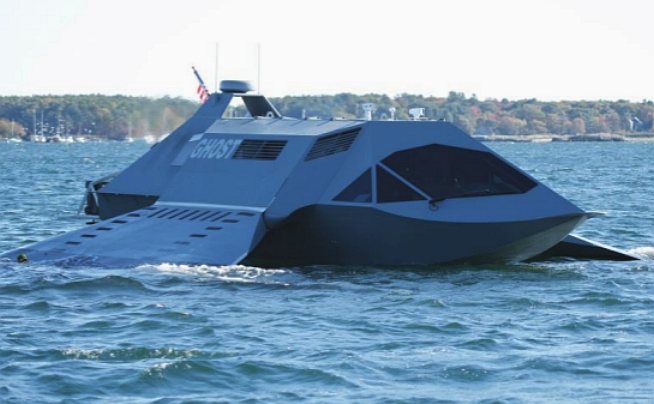
REX RESEARCH - GREGORY SANCOFF - JULIET MARINE'S STEALTH STARTUP GEARS UP FOR WAR
About an hour north of Boston, in a city by the sea, there’s a project underway to reinvent the marine industry. More specifically, the marine defense industry.
Imagine a boat that moves through the water differently from any other boat in existence. It uses
“supercavitation” — the creation of a gaseous bubble layer around the hull to reduce friction
underwater — to reach very high speeds at relatively low fuel cost. Its speed and shape means it can evade detection by sonar or ship radar. It can outrun torpedoes. Its fuel efficiency means it has greater range and can run longer missions than conventional boats and helicopters.
Now imagine that this vessel has already been built and tested. It “flies” through the water more or less the way it was designed
to - like a high-tech torpedo, except part of the craft is above water
- and it can be maneuvered like a fighter plane. “It’s almost as much an aircraft as it is a boat,” says its inventor, Gregory Sancoff, the founder and CEO of Juliet Marine Systems, a private company in Portsmouth, NH.
The vehicle, dubbed the “Ghost,” is the first of its kind and is garnering attention from organizations like the U.S. Navy, Coast Guard, defense contractors, and foreign
governments - as well as hackers in foreign countries, who are presumably trying to figure out how it works. Juliet Marine Systems has received about $10 million in total funding, about half of which comes from its founder and private investors. The startup’s institutional investor is Avalon Ventures, a VC firm with offices in the San Diego and Boston areas.
Until recently, the project was kept under wraps because of secrecy orders from the federal government. But this summer, Sancoff says, the
Ghost - which looks like something out of Star Trek (see photos) -will be ready for prime-time deployment. His team of 16 employees is working on integrating weapons and sensors for military missions. “We have a fully functional, basically go-to-war boat right now,” Sancoff says.
The question is, does it really work? And, more to the point, can it be used for missions safely, reliably, and effectively? If the answer is
yes - and that’s a big if, from an outside perspective - one could imagine a squadron of Ghosts being deployed to the
Persian
Gulf, say, to defend warships and other interests against “swarm” attacks by small boats, Sancoff says. The vessel also could be used against pirate attacks, for Coast Guard rescue missions, or to transport workers to and from oil platforms. The technology might have much broader uses,
too - in global cargo shipping, for example, to reduce fuel costs, or for commercial jet skis. (Wacky as it is, the concept is not as far-fetched as, say, a submarine that can also fly.)
But to get a better sense of the ship’s real prospects—and the company’s—let’s consider the whole story.
FROM MEDICAL TO MARINE TECH
Sancoff, 55, is a prolific inventor and serial entrepreneur who, I’m told, takes engineering magazines to bed. He grew up in a military family and went to high school in Lawrence, MA. As a kid, he lived on Army bases and says he remembers saluting the flag when he got out of the car. Sancoff never served in the military, but that’s probably because he was too busy inventing stuff.
He started his first company when he was 18 - a machine shop for doing rapid device-prototyping for other businesses. He sold that and headed west to San Diego in 1982, at age 25. As a consultant, he became an expert in medical devices, including systems for delivering intravenous fluids, collecting health data, and other applications. He started a new company, Block Medical, and sold it for $80 million in 1991. His next company, River Medical, was based around a new kind of drug-delivery device for hospitals. River acquired IVAC, a medical-device firm divested from Eli Lilly, and ended up being sold to Advanced Medical (IMED) for $400 million in 1995.
Sancoff’s next big project was to start Onux Medical, a surgical tech company based in New Hampshire. It was there, in 2000, that he first got inspiration for Juliet Marine and the Ghost ship. Sancoff was sitting in a conference room when he heard the U.S.S. Cole had been attacked off the coast of Yemen by a small boat loaded with explosives. Seventeen U.S. sailors had been killed and many more wounded. He sat there in disbelief as he realized a billion-dollar warship had nearly been sunk by a couple of guys in a raft.
Juliet Marine would derive its name from a U.S. Navy “war games” exercise held in 2002. At $250 million, it was the most expensive exercise in Naval history. “Fleet Battle
Experiment - Juliet” involved warships parked off the coast of California and a series of simulated small-boat attacks. The results of the simulation were grim: more than 20,000 deaths and massive losses to the fleet, in a Persian Gulf scenario. Yet, Sancoff says, the Navy hasn’t done anything in the past 10 years to guard against such attacks, other than work on targeted rocket systems.
“When you’re an entrepreneur, there has to be an overwhelming reason why you do it,” Sancoff says. “That was it for me.”
He saw a big opportunity - if only he could design a ship fast enough and maneuverable enough to intercept attackers before they could get close to big ships or shorelines. He had raced hydroplanes as a
teenager - probably could bulls-eye womp rats, too (sorry, Star Wars
joke) - so he had an intuitive feel for what it might take.
Which brings us to supercavitation. It’s an old idea. During the Cold
War, the Russians developed a torpedo called the Shkval (“squall”) that could go more than 200 mph — five times as fast as a conventional torpedo — using a rocket engine and air ejected in front to produce a gaseous bubble completely enveloping the projectile. That reduces the friction between the hull and its surroundings by a factor of about 900, enabling superfast travel. Yet rocket-propelled torpedoes have downsides in performance and reliability; the sinking of the Russian submarine Kursk in 2000 is rumored to have been caused by a malfunctioning Shkval.
Meanwhile, the U.S. Navy and others reportedly have been working on a next-generation supercavitating torpedo since at least the 1990s. And in recent years, the Defense Advanced Research Projects Agency (DARPA) ran a program, called Underwater Express, to design a supercavitating submarine. There is also interest in using the concept to improve fuel efficiency for
oil tankers, ferries, and other large ships, typically by creating air bubbles at the front of the hull. As of yet, however, nobody has publicly demonstrated a successful supercavitating craft.
To that end, after leaving Onux (which was bought by Bard in 2004), Sancoff spent several years doing research on his own and incorporated Juliet Marine in 2008. By June of last year, using $5 million of mostly his own money, his team had built a fully functioning prototype — Sancoff prefers the term “pre-production” vehicle. And earlier this year, he secured an additional $5 million from Avalon Ventures, the VC firm that invested in his last two companies.
At a Bay Area event in March, Kevin Kinsella, the Avalon partner on the deal, spoke glowingly of
River Medical in particular. “We got 10x [return] in 18 months, and I only had to go to four meetings. An ROI of 2.5x per board meeting is fantastic,” he said. (Onux didn’t cash out quite as well, but it still worked out fine.)
After seeing firsthand what Juliet Marine built with $5 million, Kinsella said, “If you were taken around by a handler from Lockheed or Grumman or Northrop or any of them, and they told you, ‘We developed this on $150 million,’ you wouldn’t bat an eye.” He told the story of a meeting with Avalon and its fund investors. Someone asked Sancoff, “How did you get to be so capital efficient in your company?” Kinsella relays, “He leaned on the podium and said, ‘Because it was my money.’”
NOT YOUR GRANDFATHER'S BOAT
OK, so here’s how it works, according to a patent filing (see diagram, below). The main compartment of the Ghost vessel, which houses the cockpit and controls, sits above the water in between two torpedo-shaped pontoons or “foils,” which are submerged and create all the buoyancy and propulsion for the craft. The angle of the struts that connect the foils to the command module is adjustable — so the craft can ride high in choppy seas and at high speeds (so waves don’t hit the middle part), and low in calm
water and at lower speeds.
“We’re basically riding on two supercavitating torpedoes. And we’ve put a boat on top of it,” Sancoff says.
At the front of each foil is a special propeller system that pulls the craft forward. The
propellers are powered by a modified gas turbine — a jet engine — housed in each foil; the air intake and exhaust ports for the engines are in the struts. As the ship moves through the water, the motion of the propellers creates a thin layer of bubbly water vapor that surrounds each foil from front to back, helped along by the presence of “air trap fins” that keep the vapor in contact with the hull (and keep liquid away from the hull). The vapor is what constitutes the supercavitation, so the foils can glide effortlessly through the bubbles.
“The key is the propulsion. You have to have a lot of power at the right location in this vessel,” Sancoff says. Exactly how this is done is a trade secret. But the propulsion system, which he says generates 30 percent more thrust than any other propeller-based system, essentially “boils water underwater and generates steam vapor.” (I take this to mean the pressure directly behind the propeller blades is so low that the liquid water there “boils” off and becomes a gas—hence the bubbles.)
After doing some digging in the literature, I asked Sancoff whether what’s in the
patent filing is really how it works — in terms of how the Ghost creates its mysterious supercavitation. His answer: “No.” (OK, so there’s more to the story here. But you know when you’re supercavitating, he says, because the engine efficiency actually improves as you go faster.)
In any case, the overall design makes the craft go fast, but Sancoff isn’t making any public claims yet about exactly how fast. “We don’t talk about speed, how many weapons [it can carry], or how far we can go,” he says. Yet its rumored speed is at least 80-100 knots — over 100 mph. That’s not going to challenge the top
speedboat records — there have been hydroplane efforts (riding on the water surface) that have exceeded 200 mph (174 knots) and even 300 mph (261 knots), some with fatal
results - but the Ghost is faster than any previous underwater vehicle, Sancoff says.
What’s more, he says, the Ghost provides a much smoother ride than what Navy SEALs are used to; many of them blow out their backs from the bumpiness of their boats, he says. “Our boat does not have impact from the waves. We cut through the wave,” Sancoff says. “That is critical science.”
Hydrodynamics experts I’ve talked to say the main challenges of such a craft are controlling it, stabilizing it, and making it quiet. Going superfast in a straight line might be doable, they say, but any sort of turning or maneuvering must be done very carefully, because if the bubble layer distorts or breaks down at high speeds, tremendous water forces will come to bear on the foils, which can be catastrophic.
To steer itself through the water and maintain stability, the Ghost uses four movable flaps on the front of each foil and four on the back of each foil, for a total of 16 flaps. (The flaps reach through the thin bubble layer into the surrounding water.) The struts are adjusted to keep the command module out of the water, and the foils stay submerged, so waves at the water surface should only hit the struts, which have a small cross-section.
“It’s computer controlled, like a modern F-18,” Sancoff says. “We’re boring what looks like two wormholes underwater, and we’re flying through foam.” Sancoff himself has been test-driving the ship over the past couple of years. “I have been learning an entirely new craft since then. It’s a totally new experience,” he says. “Just because you drive Grandpa’s boat, you’re not going to drive this one. It’s more like a helicopter.”
As for the craft’s audio profile, Sancoff is proud of its “silent propulsion” system that includes a sophisticated muffler system for the engines. You can’t hear it from 50 feet away, he says.
COMING OUT OF THE NIGHT
With any grand invention like this, some outside experts are going to be skeptical. “I wouldn’t say it’s not going to work. But I have concerns,” says Gary Balas, head of the department of aerospace engineering and mechanics at the University of Minnesota. Balas is an expert in flight and underwater control systems, but his main objection is that the propulsion system of the Ghost, with its forward propellers, is very unusual for a supercavitating craft. The typical approach, as in the Russian torpedo, is to propel the craft from behind and eject gas and/or use a blunt shape in the front to create an air cavity around the craft. “I don’t see how they’ll achieve what they expect to achieve,” Balas says. “And I don’t see how they’ll control the altitude and the yaw of the vehicle.”
His colleague, Roger Arndt, also a professor at the University of Minnesota, is an expert in fluid flow and cavitation. He has doubts about the Ghost propulsion method as well. In fact, cavitation bubbles are normally bad for propellers and can cause serious damage. But there is a type of propeller, with wedge-shaped blades, that produces supercavitation in high-speed racing boats; presumably this is similar to Ghost’s propellers. But in this case, Arndt says, “I am dubious about the application of supercavitating propellers.” (To be fair, Sancoff said that what’s in the patent filing isn’t quite how it works.)
Other experts on supercavitation declined to comment for this article. Sancoff emphasizes that the project has a lot of sensitive aspects to it, in terms of national security, so people who know about it aren’t talking. And he claims that Juliet Marine’s website is getting “attacked” 350 times a month by hackers, mostly in foreign countries.
In any case, the current vehicle — which resides under tight security at Portsmouth Naval Shipyard (“a great asset” for a startup to be able to rent space in, he says) — holds 18 people and weighs some 60,000 pounds fully loaded; the underwater part of the vessel is 62 feet long. Sancoff says it can be launched from any beach. “A group of these boats coming out of the night in the Persian Gulf, armed with torpedoes, would be undetectable to large ships,” he says. “Ghost cannot be hit by a torpedo. You would have to shoot it with a gun.”
Not surprisingly, Sancoff sees an urgent military need for his craft. The Navy loses sleep about swarm attacks and security in the Strait of Hormuz (which runs between Iran, United Arab Emirates, and Oman) and other strategic waterways, he says. Yet it hasn’t moved quickly enough to do anything about the threats. “We talk with the Navy weekly,” he says. “We believe the U.S. could use a hundred of these boats right away.” At a price of $20 million per boat — fully loaded with electronics, radar, and so forth — that “provides us with a billion-dollar market opportunity for coastal and fleet protection,” he says.
Meanwhile, the U.S. State Department has granted Juliet Marine permission to talk with the governments of Israel and UAE, which both have marine security concerns. The company says it is currently building a manufacturing facility near Portsmouth, in anticipation of ramping up to sell Ghost ships to customers. Sancoff adds that Juliet Marine is planning to build two more versions of the ship this fall, using what he calls “the final configuration.”
And while the startup strives to gain full acceptance from the U.S. Navy and other potential defense customers, it is “working on weaponizing” the craft, says Sancoff. “The vehicle’s done. Now it’s time to get mission modules complete.” That means mounting torpedoes, machine guns, radar, mine-detection systems, and other sensors onto the craft — and making sure it all works the way it’s supposed to.
That remains to be seen, of course. But if it performs as advertised, Juliet Marine could end up playing a vital role in global security on the high seas. “That’s the beautiful thing about being an entrepreneur,” says Sancoff. “You take a risk with it.”
FRIDAY FEBRUARY 24 2012 - NEW HAMPSHIRE ENTREPRENEUR CALL TO ACTION
'We plan to build a major company here,' says Greg Sancoff, founder of Juliet Marine Systems.
When entrepreneur Greg Sancoff takes his watercraft out for a test drive on the Piscataqua River, the 75-foot long vessel draws quizzical looks from people who see it. There are good reasons for the double-take stares.
The sleekly angled, supercavitating Ghost looks like it just arrived from the set of a Hollywood science fiction movie. In reality, the Ghost has the potential to play a vital role in protecting American Navy vessels in volatile regions of the world, such as the current, headline-making tensions in the Persian Gulf.
Ghost is a high-speed attack craft - Sancoff calls it a modern version of the PT Boat - specifically designed to protect vital waterways like the Straits of Hormuz and to counter threats to commercial shipping, such as piracy, which is increasing in many areas of the world.
Sancoff says the Ghost has been compared to an attack helicopter on the water. "Ghost would be a very important and cost-effective security tool to exert a constant presence in this troubled region," he said.
For almost three decades as a successful entrepreneur in the medical devices industry, Sancoff was accustomed to taking risks. He has founded and sold four companies totaling more than $100
million. But his latest venture, Portsmouth-based Juliet Marine Systems, required a combination investment of patriotism, personal finances and innovative research and development far beyond anything he had done before.
"By far this is the most fulfilling thing I have ever done," Sancoff said.
FAST & FUEL EFFICIENT
What makes the Ghost unique is that it was developed entirely on spec in less than four years, unprecedented for a potential "game-changing" defense technology, he said.
While other weapons and defense industry programs get government approval and research funding and then embark on lengthy development and deployment process, Juliet Marine Systems bypassed all of that.
"It was the fastest way to get it done. We didn't get involved with government research institutions because it would have slowed us down," Sancoff said of his personal multimillion-dollar backing of the Ghost. "Look at Silicon Valley and the most efficient way to develop new technology. We did this in a think tank environment just as companies like Apple do."
Juliet Marine Systems created and built the Ghost prototypes in secrecy at the Portsmouth Naval Shipyard with only 10 full-time engineers and scientists.
The Ghost could have been deployed already if the federal government had not put a secrecy order in place for more than 18 months on some of Juliet Marine's patents. Sancoff said this prevented extensive testing during that time because the craft couldn't be seen in public.
Despite the delay, Sancoff has built it and the Navy and maritime industry have come to see it.
What they are seeing is a very fast, fuel-efficient craft that can barely be detected by radar and can stay on patrol for a very long time (because it's now classified material, Sancoff can't say exactly how fast the craft can go and how long it can go between refueling its gas turbine jet engines.)
It's fast because it has been designed to fly through an artificial underwater gaseous environment that creates 900 times less hull friction than water. Sancoff also said the Ghost has 22 special systems that give the craft stability.
Juliet Marine is currently in discussions with defense companies to implement an off-the-shelf weapons solution. In keeping with his entrepreneurial roots, Sancoff will not make it a overthought process.
"We do not have to reinvent the wheel," he said. "There are several systems today that would provide ample power and fit the mission characteristics."
CALL TO ACTION
During a recent visit to the Pentagon, a high-ranking naval research officer asked Sancoff, "Why did you do this?"
For Sancoff, it was a decades-long journey of finding a solution and "giving something back to my country."
The genesis, Sancoff explained, came in October 2000 when the naval destroyer USS Cole was attacked and 17 sailors killed by an explosive-laden small craft guided by al-Qaeda terrorists in Yemen. He became focused on a solution for fleet security from attacks that are akin to land-based IEDs, or improvised explosive devices.
The terrorist attacks of Sept. 11, 2001, provided another burst of motivation. Finally, there was a major naval fleet exercise in 2002 to determine security from small boat attacks. The exercise was code-named Juliet, which provided the name for Sancoff's company, and the result showed too many vulnerabilities.
"This was my call to action," he said.
He said he began to do voluminous research, and when he sold his Hampton-based company, Onux Medical, in 2004, it became his full-time quest to create a new type of company to work at rapid deployment speed.
"My wife Jennifer talked about this extensively. The idea was so strong that we decided to go forward and develop these ideas," Sancoff said about the decision to finance the multimillion-dollar startup with their money. "I have been very successful and wanted to give something back to my country."
The company was officially started in late 2007, and major research and development began in 2008 after the space at Portsmouth Naval Shipyard was secured. "We have a very small team of people, and they are very smart at what they do. This has allowed us to have such a rapid turnaround time," Sancoff said.
The company's board members include two retired U.S. Navy admirals and former U.S. Sen. John E. Sununu of New Hampshire. Sancoff said construction of the Ghost was enhanced by the work of many regional machine shops, and he believes the Seacoast region should become the site for manufacture of the Ghost and other marine-related systems.
In fact, the company has begun to add its engineering and scientific staff in anticipation of both commercial and military contracts for the Ghost.
"It's up to them (users) just how fast they want to adapt this new technology," Sancoff said. "We have been in discussions about making a 150-foot version. There are so many applications, even down to pleasure craft size. We plan to build a major company here."
CHAPTERS | CHARACTERS | MEDIA | MOVIE REF | SCREENPLAYS
WWIII3 Cyber Nuclear Holocaust is an original John Storm political thriller.
SEE OUR WWIII SURVIVAL GUIDE OR RETURN TO BASE
This website is Copyright © 2024 Cleaner Ocean Foundation and Jameson Hunter Ltd.
Copyright is asserted as per sections 77 and 78 of the Copyright Designs and Patents Act 1988.
This is a work of fiction. Names and Characters are the product of the authors' imaginations,
and any resemblance to any person, living or deceased, is entirely coincidental, save for reference to heads of state, whose dialogue, actions and thoughts do not represent those of the actual persons. Being entirely fictional. All rights reserved.
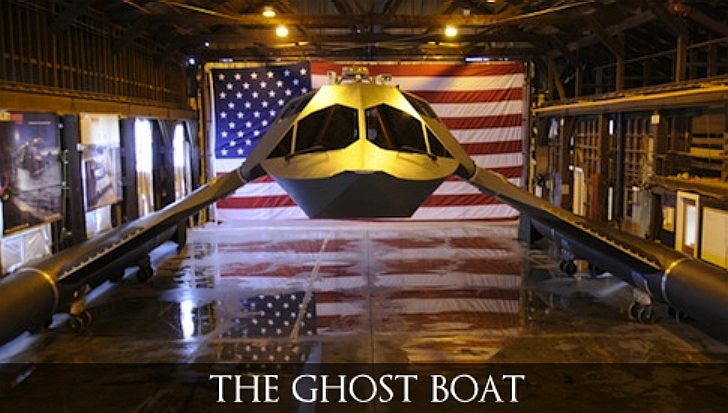



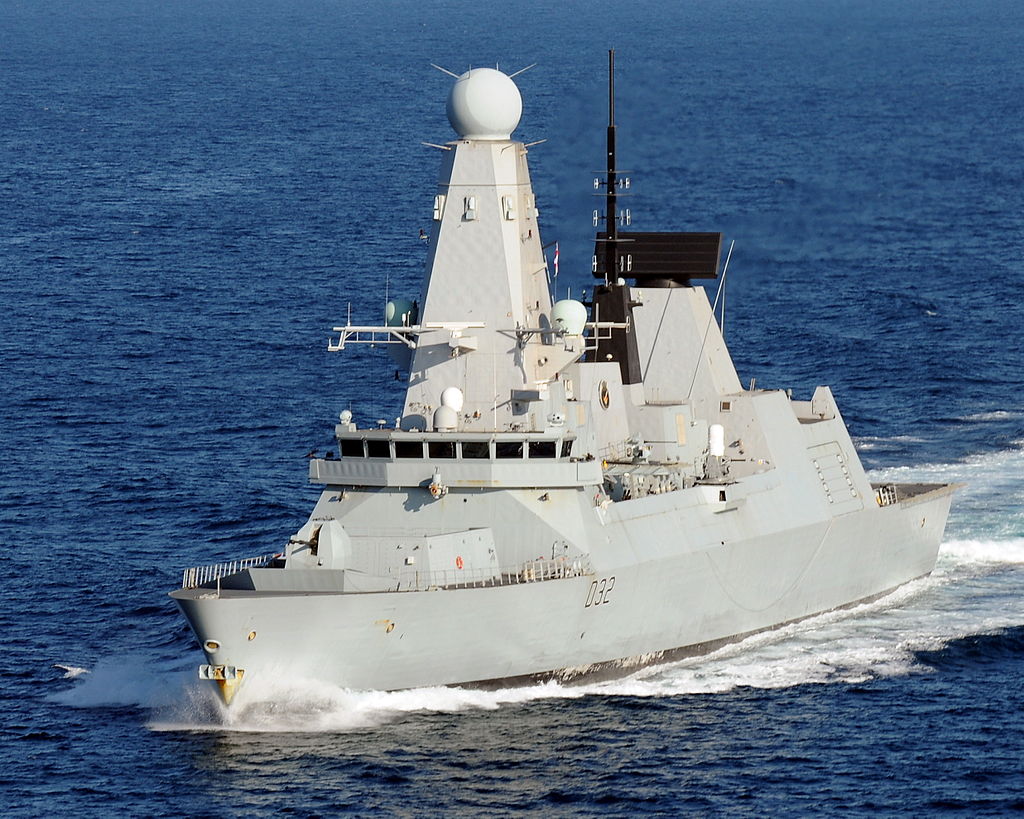
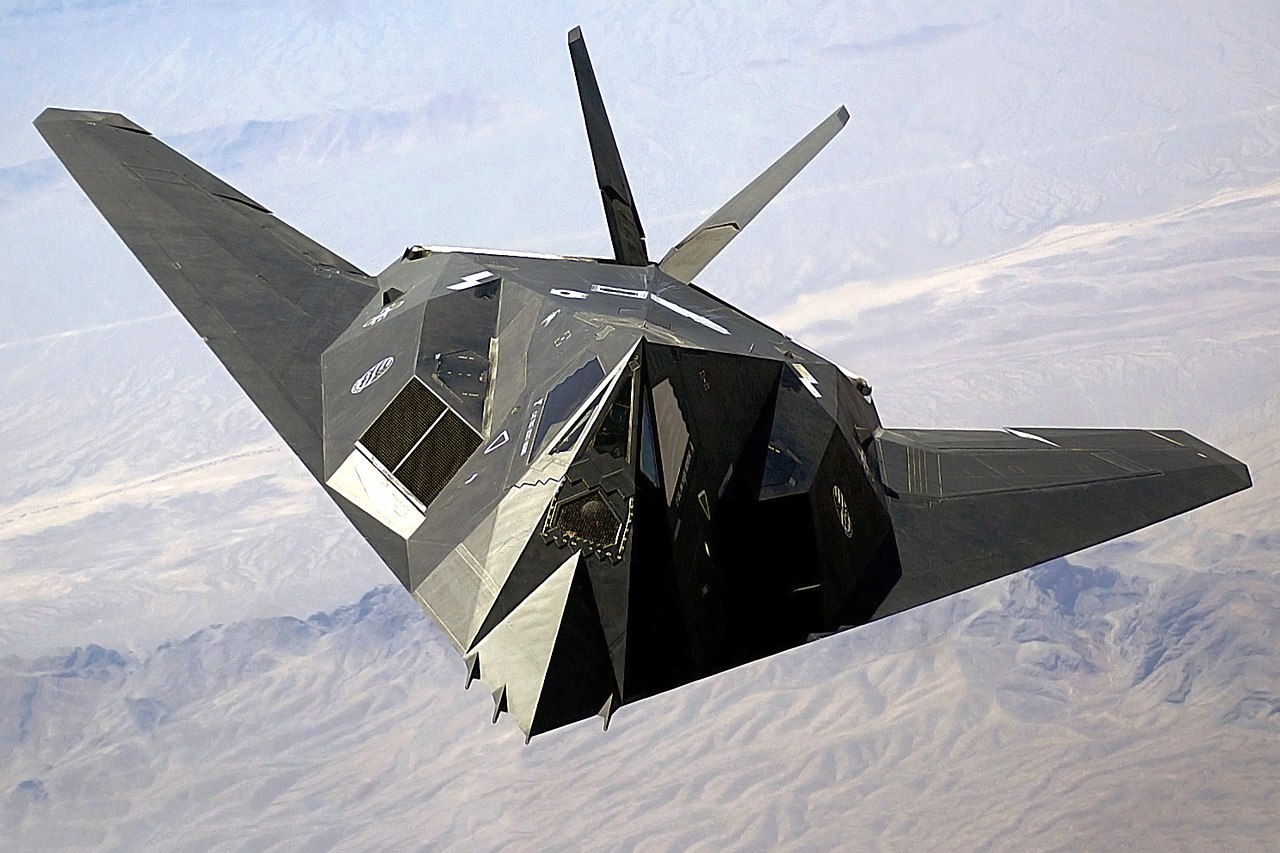
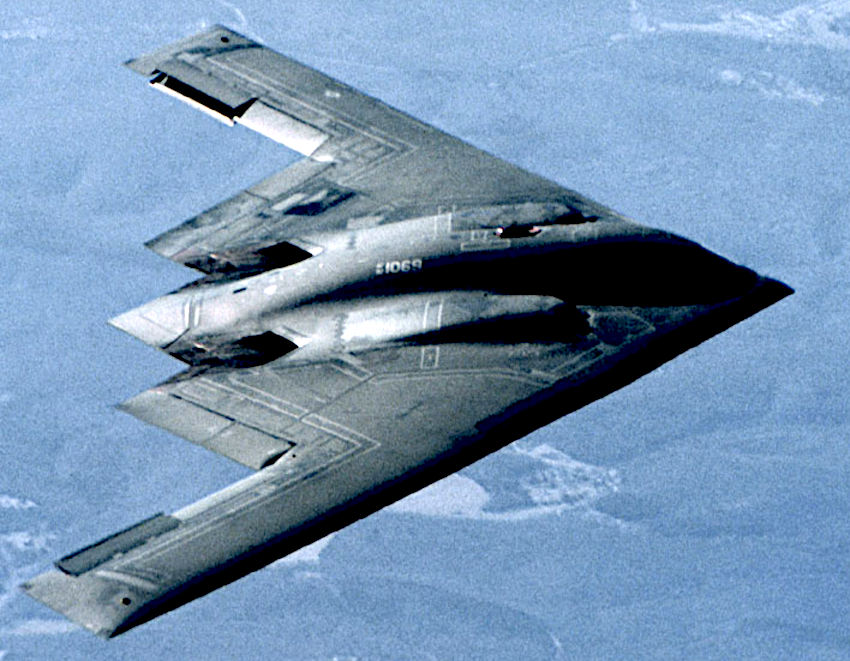

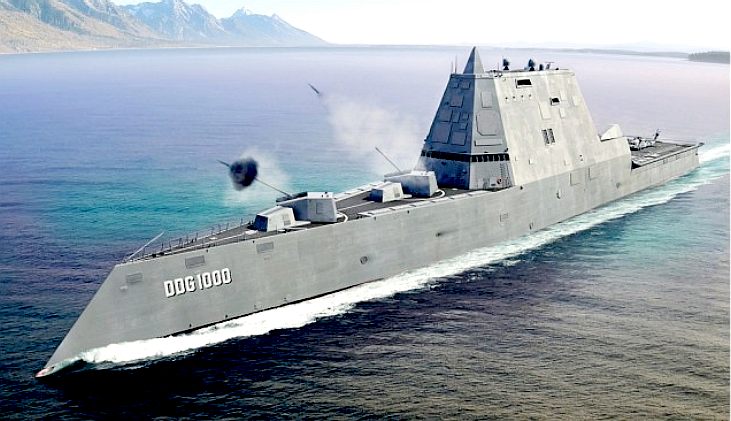
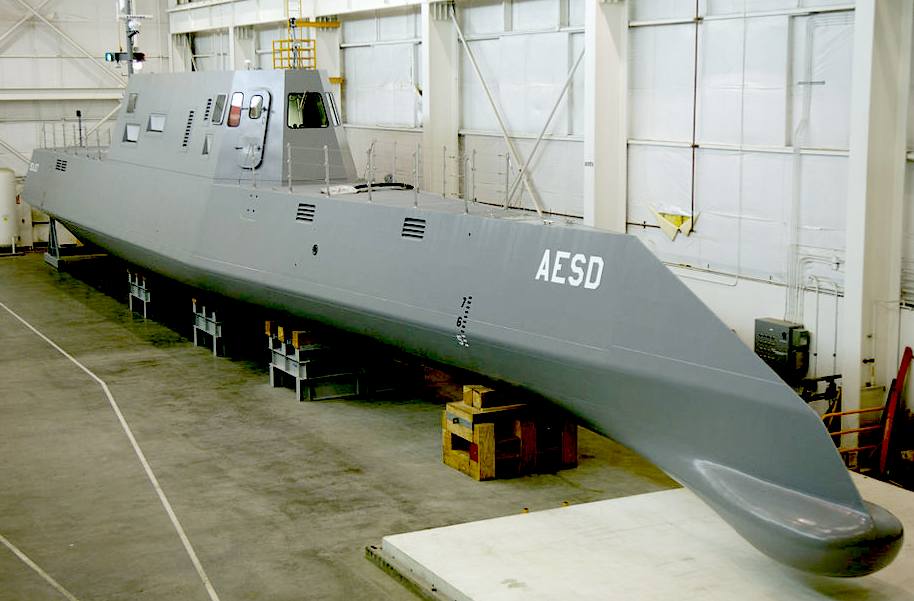
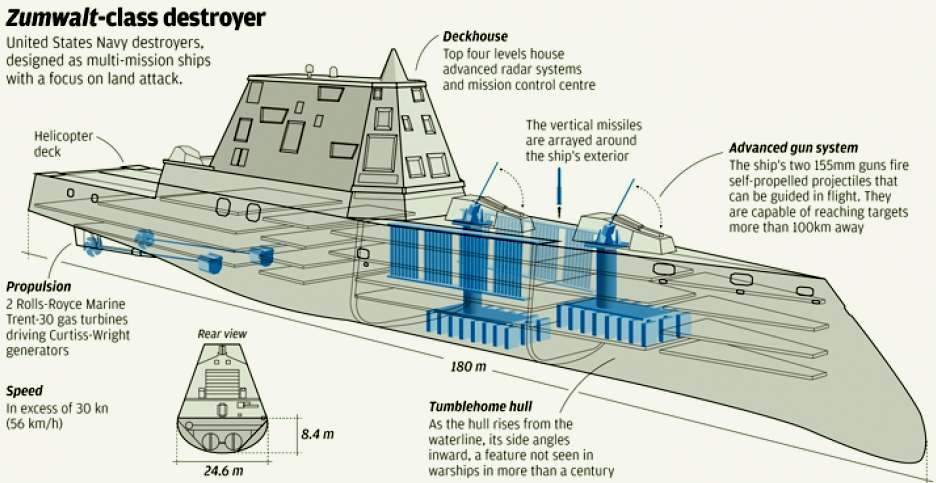

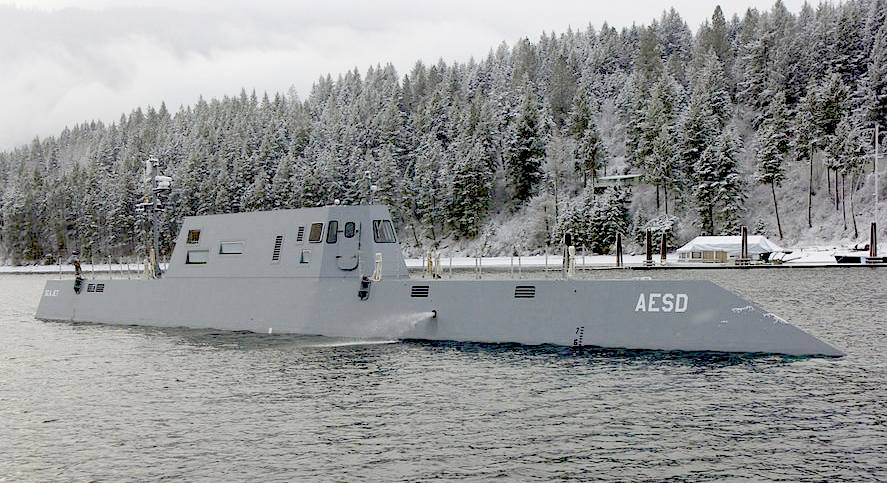
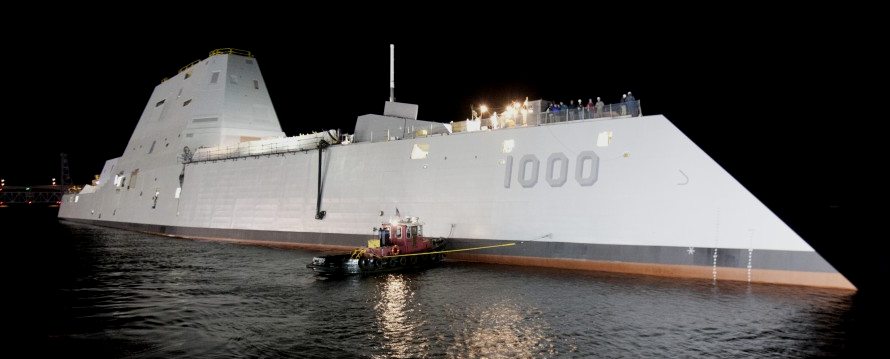
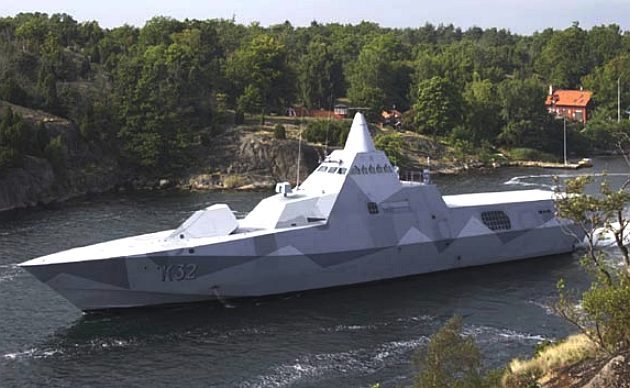
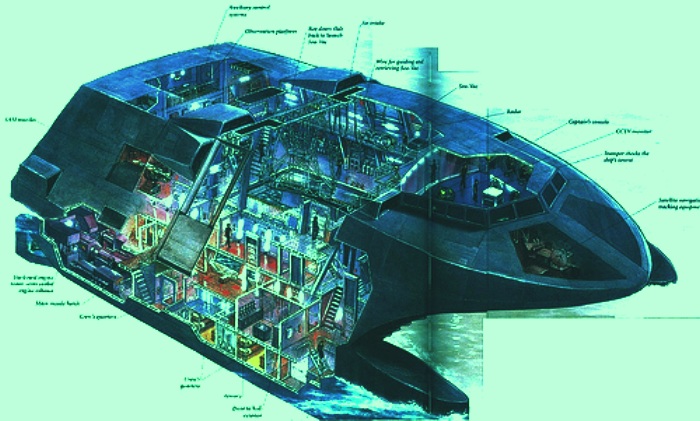
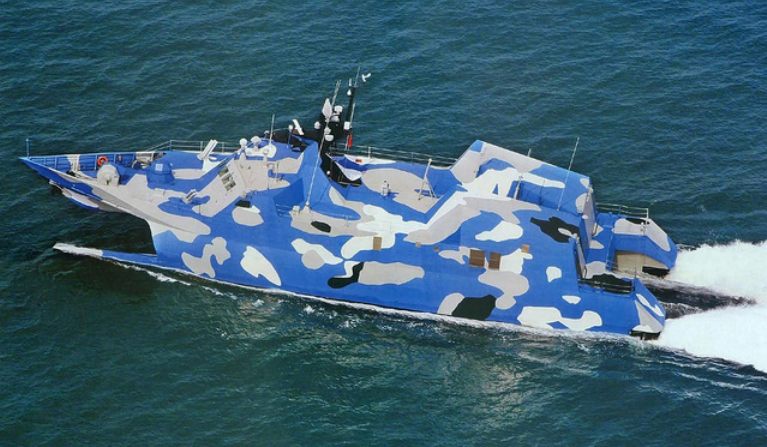
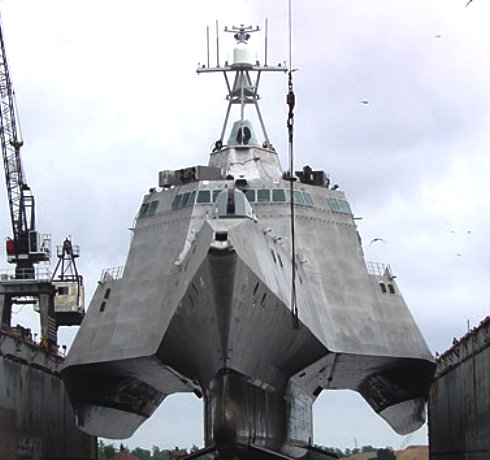
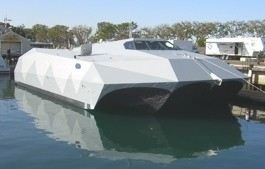
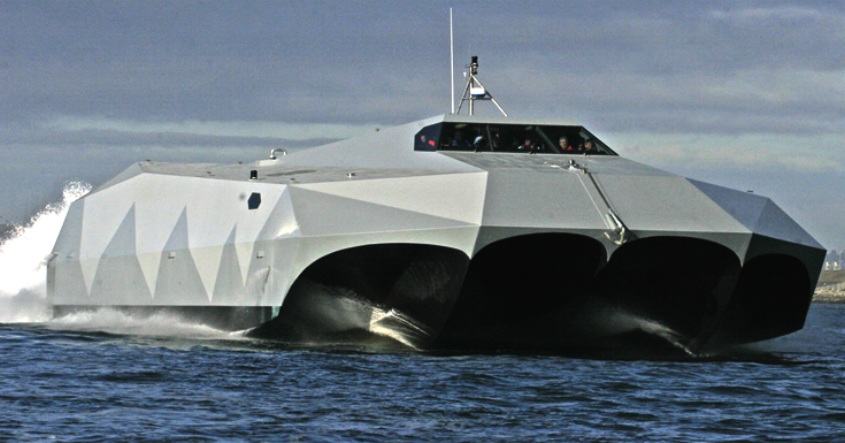
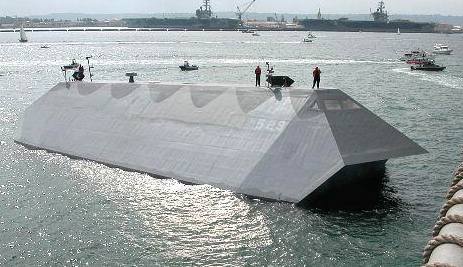
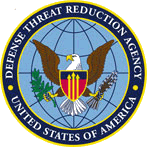

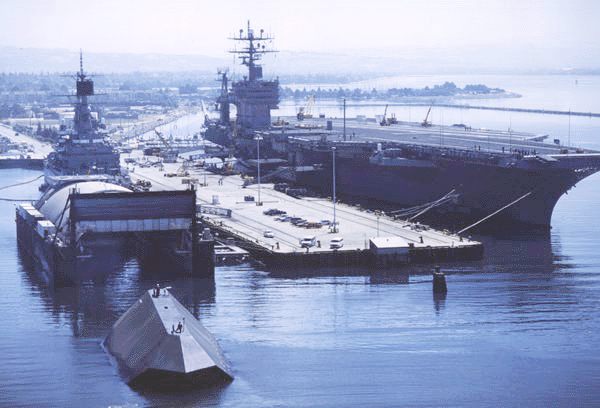
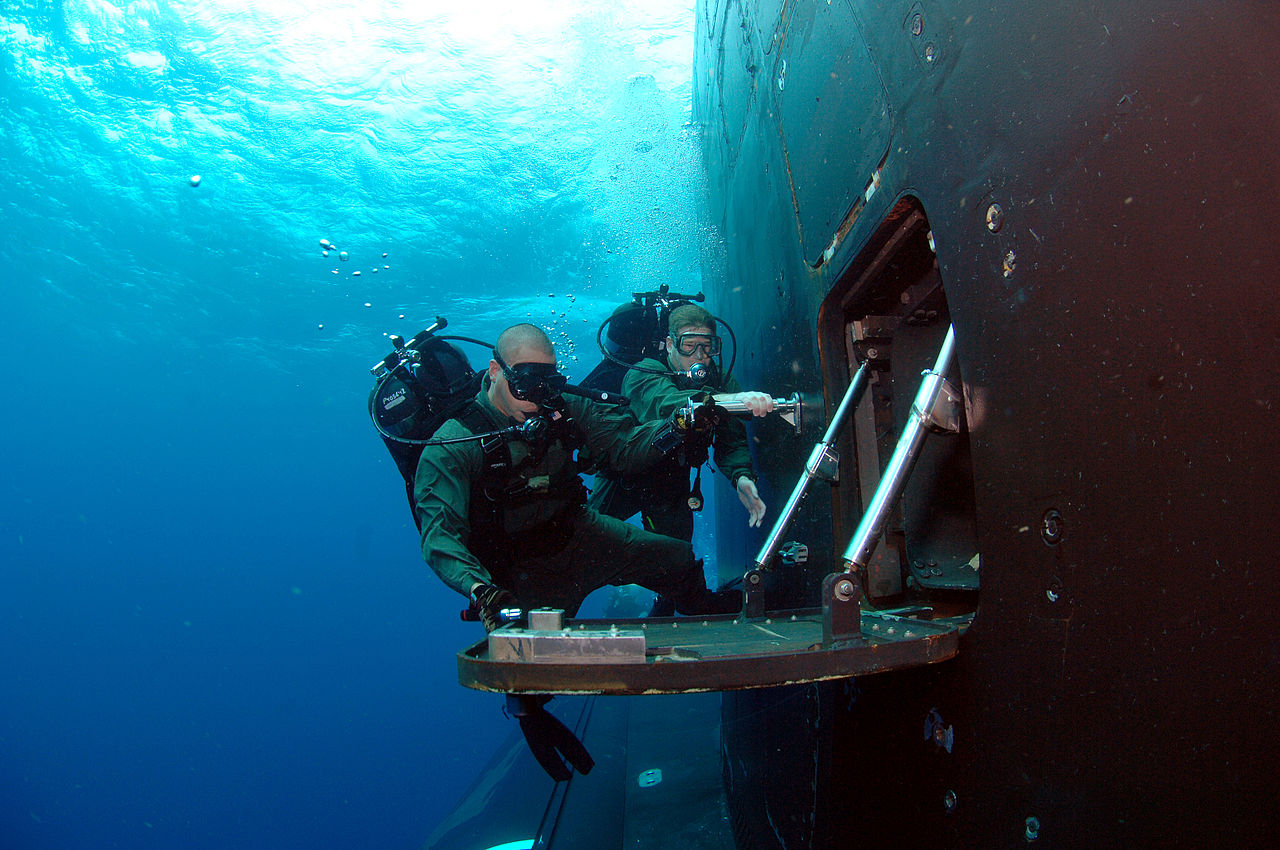
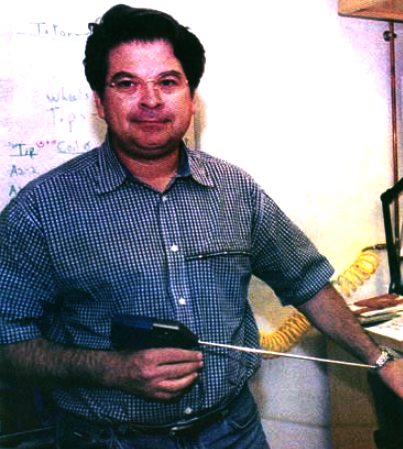

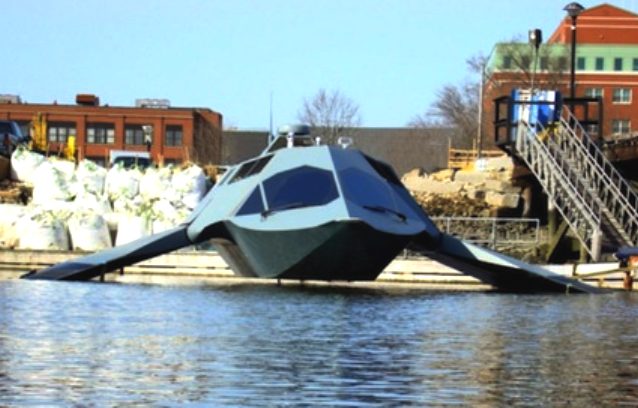
Stiletto was constructed in 15 months starting Oct 04. She is made completely out of Carbon fiber. Her purpose is to insert emerging technology at little cost due to her Electronic Keel and to provide a venue for operational experimentation. It is not perfect, nor is she designed to solve everyone's needs (no she does not submerge - we left that to the Billion $ club).
What she is designed to do is expand our technical competence against an elusive adversary and learn operationally in a very short period of time. With regards to its survivability or operational relevancy we will all learn by her mere existence. Is she easy to kill? We seem to easily lose sight that most military systems are all easy to destroy by a willing enemy.
Our objectives should be focused on matching our adversaries at scale with an ability to cope and adapt – surely the Stark, Cole, M-1 ABRAMS, and Hummers have taught us how easy it is to kill systems designed to survive everything our engineering imagined – unfortunately what our engineers imagine, often do not align with what our enemy intends.
Stiletto out performed our expectations – with advanced speeds in calm waters and not so calm, also out performing in other areas in a time frame and within a cost.